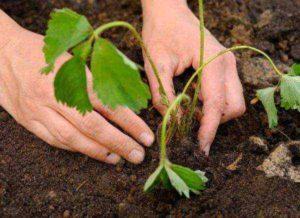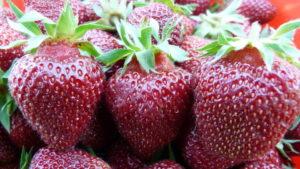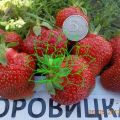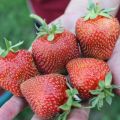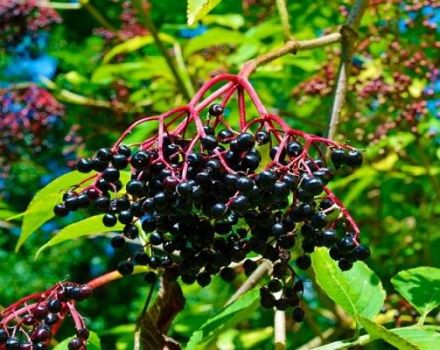Description and characteristics of Kent strawberries, cultivation and reproduction
The process of growing Kent strawberries is not too difficult if you know the main points and use healthy seedlings for planting. This Canadian variety of berry culture attracts the attention of gardeners with its relative undemanding growing conditions, resistance to adverse environmental factors and high productivity.
General characteristics and description of the variety
The Kent strawberry is described as a tall, erect shrub. The color of its leaf mass is dark green, the number of peduncles is huge. The plant is medium early, harvesting takes place already in early June. Fruiting is characterized as long-term, it is possible to harvest two crops per season.
Ripening of Kent strawberries occurs under low light conditions. The variety is quite suitable for growing indoors.
Kent strawberries are mostly large, up to 40 grams. Under favorable growing conditions, more than 600 grams of fruit can be harvested from one bush. The crop is not afraid of transportation over long distances, it is stored for up to 10 days without loss of taste and marketability. Berries have a universal purpose, they are consumed fresh, and are used as raw materials for winter harvesting.
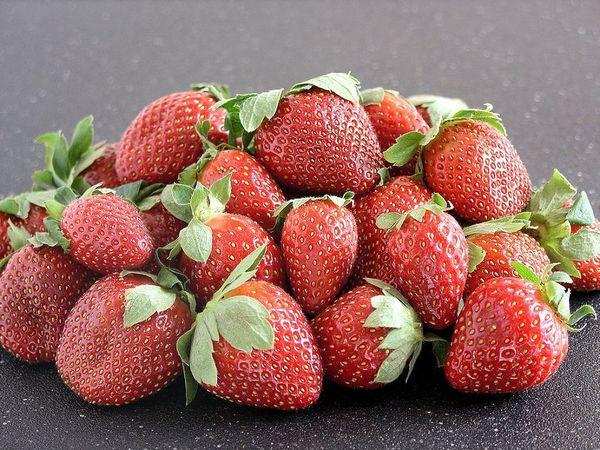
Advantages and disadvantages of garden strawberries
Of the positive characteristics of Kent strawberries, there are:
- high productivity;
- early maturity;
- large-fruited;
- excellent consumer qualities;
- sufficient keeping quality;
- endurance to drought, temperature extremes, frost;
- increased immunity to major diseases (gray mold, powdery mildew, diseases of the root system).
But the Kent strawberry variety also has weaknesses, including:
- low level of resistance to verticillosis;
- the presence of substandard berries in the first harvest.
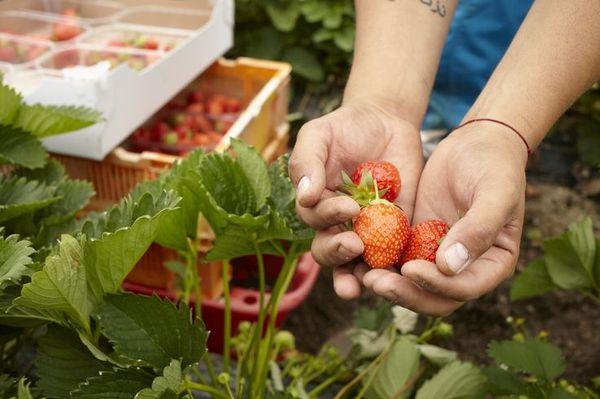
Features of growing strawberries Kent
In order for the harvest to be stable and rich, it is necessary to adhere to certain recommendations when planting Kent strawberries.
Pick up time and place
The optimal time for the formation of a berry plantation is early spring, when the snow melts and the weather is warm. An autumn planting of Kent strawberries is also permissible - in September. When growing a crop in a cold region, it is better to work in the spring, otherwise the seedlings will not have time to adapt and take root well before the onset of frost.
Preparation of planting material
Preparatory activities should be done in a week. The roots of the seedlings are cut to 10 centimeters, treated with appropriate preparations against fungal diseases, sprinkled with soil and placed in a dark, cool room. One hour before planting the Kent strawberries in a permanent place, the bushes are moistened and kept in a solution of garlic infusion to protect against harmful insects. Clay talker helps keep the root mass from drying out, and it also promotes better survival.
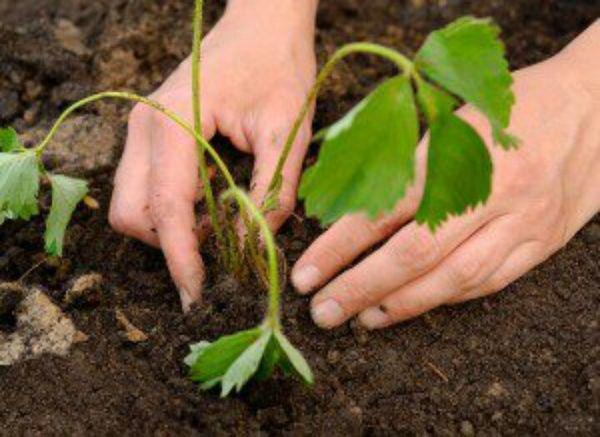
The rooting process can be accelerated by using a working fluid based on a growth biostimulator. Another important point: there should not be more than 4-5 leaves on Kent strawberry seedlings. So the plant accumulates its strength faster and grows.
Planting strawberries
Kent strawberries should be planted in well-lit meadows, preferably on hills, plains. Groundwater should not lie 50 centimeters below the surface of the earth. Abundant fruiting of the variety is observed on fertile soils, it is recommended to fertilize depleted soils with organic matter (rotted manure, compost) before planting.
Planting nests for Kent strawberries are placed at a distance of 40 centimeters from each other. First, the pits are watered, and then the prepared seedlings are planted. Young rosettes together with buds are planted with an earthy clod. Sprinkle the Kent strawberry bushes with fertile soil, leaving the root collar open - above ground level.
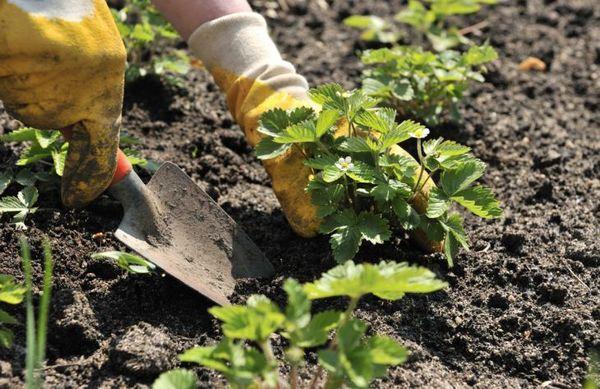
For better root formation, adaptation, it is recommended to plant seedlings in the evening, in cloudy weather. When planting, excessive soil moisture should not be allowed, otherwise there is a high probability of root rot development.
Subtleties of crop care
Among the main activities for the care of Kent strawberries are noted: removal of weeds, irrigation, loosening, preventive procedures against diseases and pests.
Shelter
When growing a berry crop under a thin film cover, it is possible to significantly increase productivity indicators. Unlike open cultivation, this method allows growers to harvest Kent strawberries twice a season.
Pruning
Despite the low intensity of the whisker formation process, pruning is still needed for the bushes. The procedure is recommended to be performed in autumn, combining it with the removal of old leaves. On each plant, it is enough to leave 1-2 antennae, the excess shoots are cut off with a sharp and disinfected pruner.
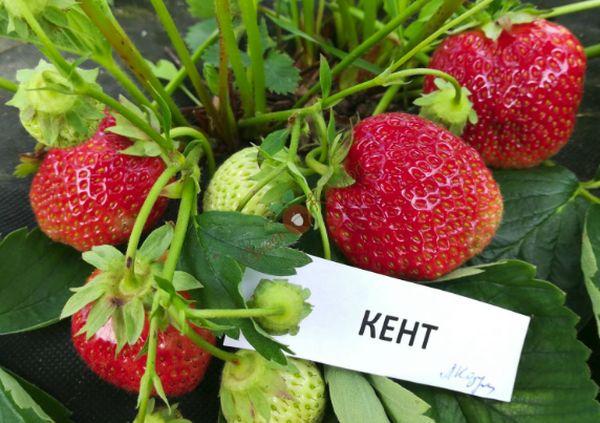
Watering
The Kent strawberry variety gratefully responds to moderate and regular watering. It is especially in need of a period of severe drought. In order to prevent oxygen starvation of the roots, the soil after irrigation should be loosened, and weeds should be removed. In order to avoid the development of fungal diseases, you should not overdo it with watering, the stagnation of moisture is also dangerous by a decrease in the frost resistance of the bush.
It is necessary to moisten strawberries under the root or by sprinkling (in the spring).
Wintering
You can protect bushes from the negative effects of negative temperatures by using additional shelter. First, you need to remove all old leaves, treat with drugs against diseases, parasites, and loosen the soil well between the rows.
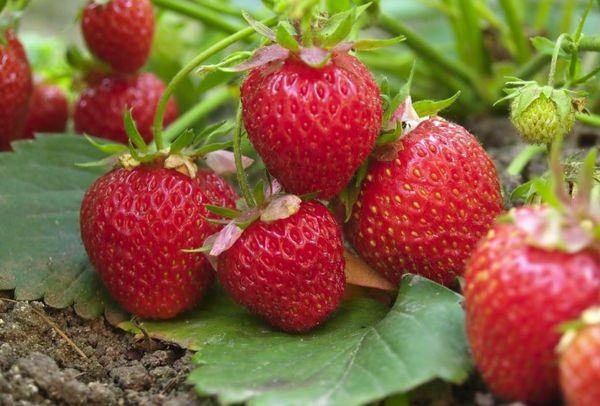
In regions with harsh winters, it is more advisable to protect plantings with a mulch layer of fallen leaves, decayed vegetation, and straw. So that in the spring the plants are not locked up, the shelter is removed as soon as the snow melts.
Mulching
To preserve moisture in the soil and facilitate the care of strawberry bushes, mulch is used.Dried grass, straw, compost, rotted sawdust, humus are excellent for these purposes. The optimum thickness of such a layer is 6-8 cm. An excellent mulching option is the use of black film.
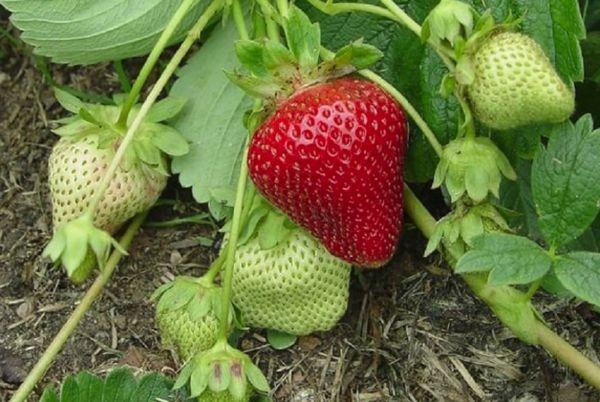
Top dressing
In the spring, it is recommended to feed the berry plantation with preparations with a high concentration of nitrogen (ammonium nitrate). In the summer and autumn, potassium-phosphorus compositions such as superphosphate, potassium sulfate are needed.
Strawberry disease and pest treatment
The Kent variety has a high degree of resistance to major ailments, but there is a danger of being damaged by gray rot, Colorado potato beetle. Preventive measures will help prevent the appearance of such troubles - spraying plantings with fungicidal agents. If signs of infection with verticillium were detected, then diseased bushes should be removed from the ground and burned. This disease is practically not amenable to treatment.
Reproduction of garden strawberries
It is more effective to breed berry crops or rejuvenate the plantation with the help of a mustache. It is recommended to plant them in the summer, choosing specimens of the first and second order, they are strong and hardy. A strong mustache is sprinkled with soil and watered regularly.
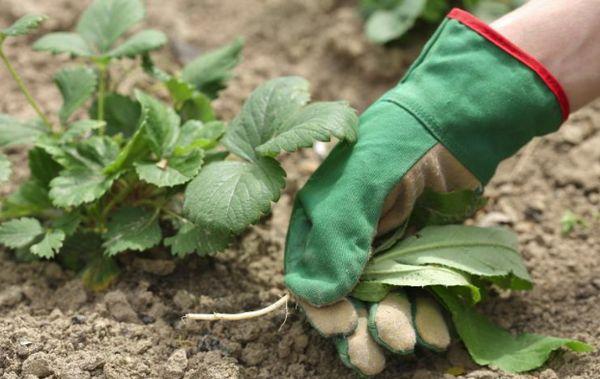
Alternatively, you can place them in suitable containers, also moisten them and when they take root well, separate them from the mother bush. Ordinary plastic cups, seedling pots are suitable for these purposes. By the time of planting in a permanent place, they should have 5-6 leaves.
The best time for planting is early August, so that young plants have time to take root and recover before the onset of cold weather.
Harvesting and storage
Fruits are removed in May-June. In order to prevent damage to the crop, it should be harvested in a timely manner, avoiding prolonged contact with the soil. The berries are placed in one layer in a plastic or wooden container with holes. It is desirable to remove the fruit with a stalk and a cup.
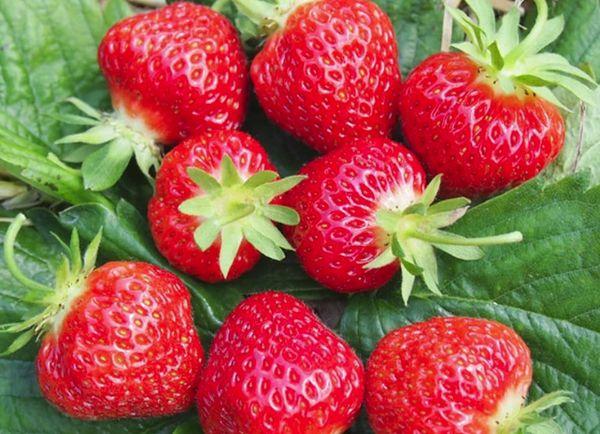
Strawberry Kent is a plant that, due to its unpretentiousness and high productivity, is within the power of even novice gardeners. When growing it, it is enough to follow the basic rules of agricultural technology and plant only high-quality seedlings. Reviews of the variety are predominantly positive.
